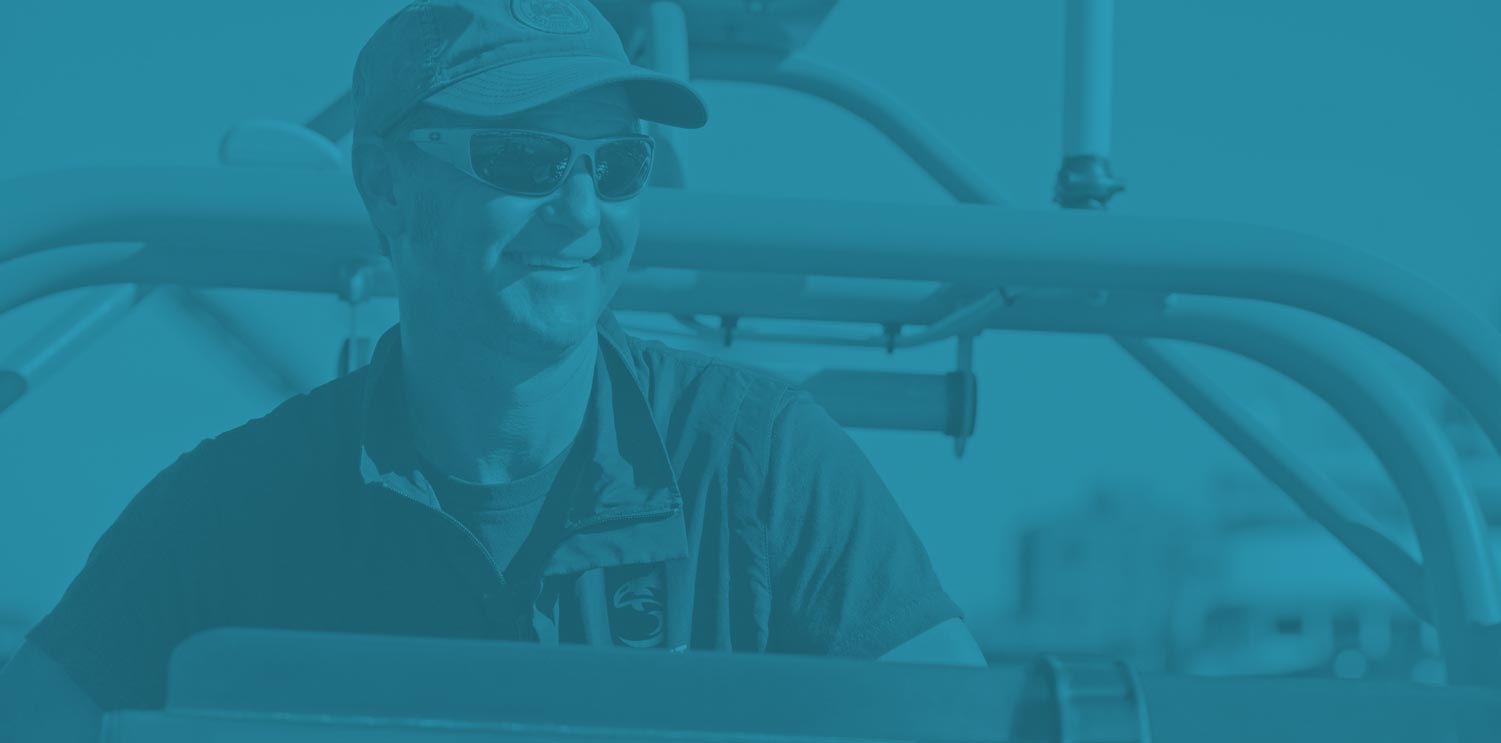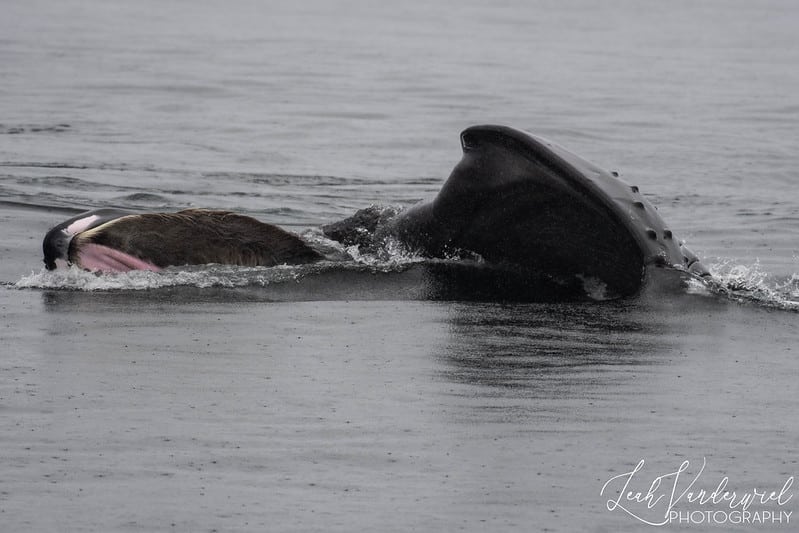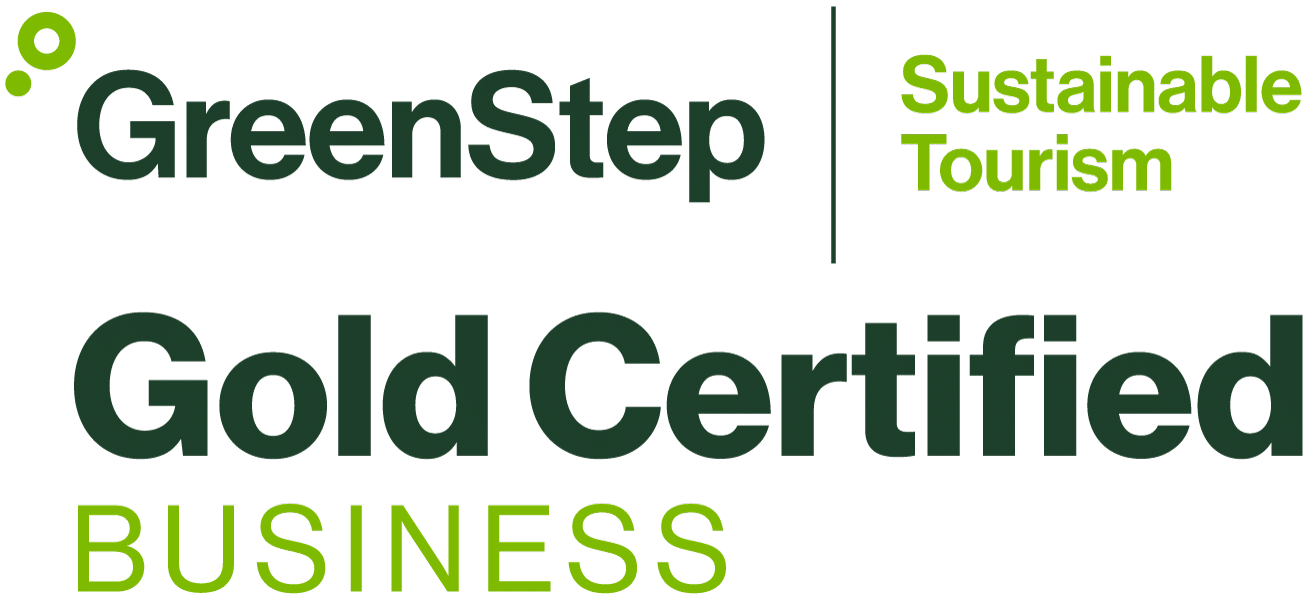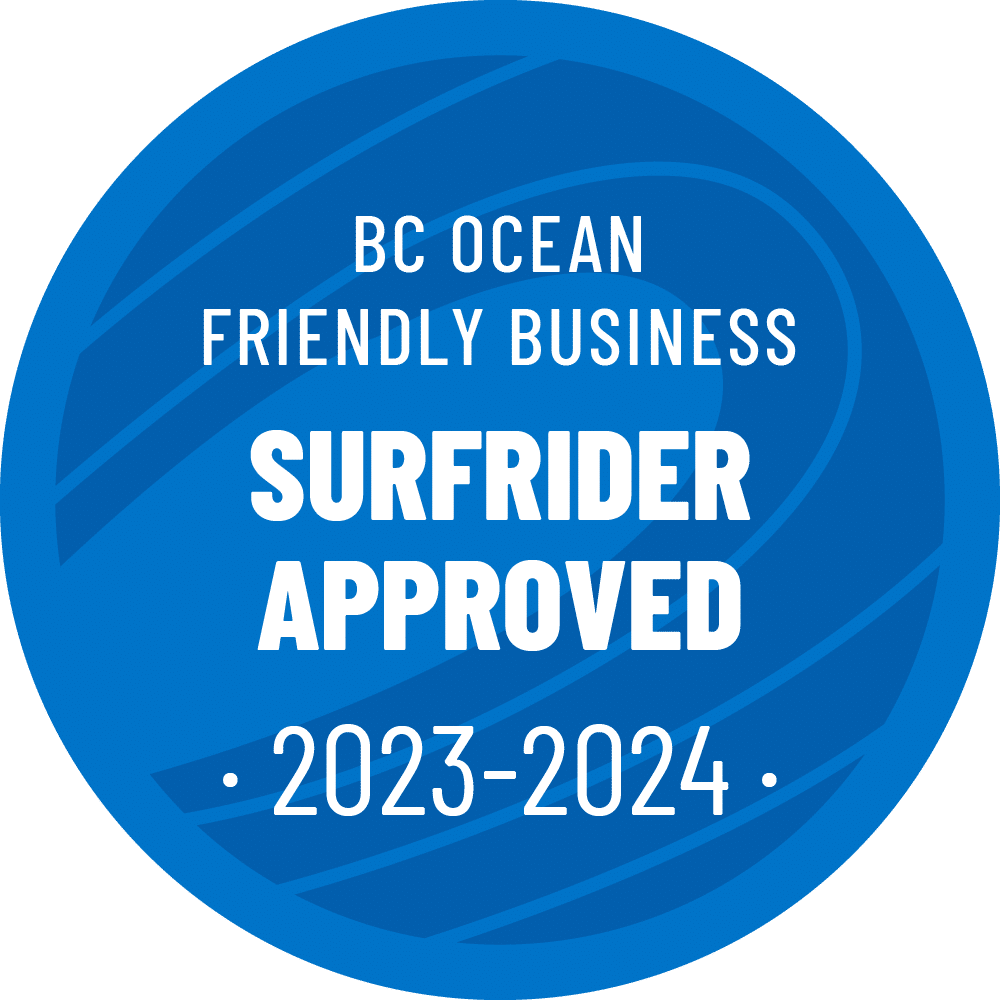Sunday, June 13th, 2021
With the forecast set for rain, the guests and crew left the Victoria Inner Harbour donned in rain gear eager to find whales and other critters of the Pacific Northwest. We made our way straight south out of the harbour and into the center of the 17 mile wide Juan De Fuca Strait.
It wasn’t long until there were blows being spotted from a humpback whale! Once we got to our viewing distance of the whale we realized that the little one was spending its time feeding in a way that is known as Lunge Feeding. Lunge Feeding is when a Baleen Whale opens its mouth big and wide and lunges either vertically out of the surface of the water, or horizontally along the surface, clasping its mouth shut around its tiny food, filtering the water out through its baleen. One of the on board crew members was able to snap a photo of the underside of the whale’s tail, or fluke, and was able to identify that this particular whale was well known to the area and was named Pop Tart. Pop Tart is the 2016 calf of one of our legendary whales named Big Mamma, who we think is one of the big reasons why Humpback Whales started making Vancouver Island their summer homes again.
After spending a good amount of time with the engines off enjoying the sounds of Pop Tart breathing and lunging Captain Jordan decided it was time to move on to see what else we could find. On our way to Race Rocks Lighthouse we encountered and stopped for a large group of Harbour Porpoise! In fact, this was the largest group of them the on board naturalists had ever seen! While typically this species of porpoise tends to be very boat shy, there were countless times multiple porpoise’s popped up around the boat in groups. We could even hear them breathing and the odd time squeaking in communication. Harbour Porpoise are the smallest Cetacean in our cold Pacific waters but play a critical role in the food chain as they are one of the more common food sources of our Biggs (mammal eating) Killer Whales. With the bark of the California Sea Lions at Race Rocks calling us, it was time to move on!
Race Rocks is the 2nd oldest lighthouse on the BC Coast and is full of a spectacular array of Pacific Northwest Wildlife. Today was a special day because we got a visit from Ollie, our lone male Sea Otter who has called Race Rocks his home for many years. Sea Otters are Key Stone Species as they play a critical role in habitat conservation by controlling the Sea Urchin Population which in turn allows kelp forests to thrive. Hanging around Race Rocks also today was a female Northern Elephant Seal, a handful of sea lions of both Steller and Californian variety, a myriad of shore birds and some harbour seals!
As we left Race Rocks to head back to the VIctoria Harbour the sun started coming out, making for an amazing end to an amazing trip!









